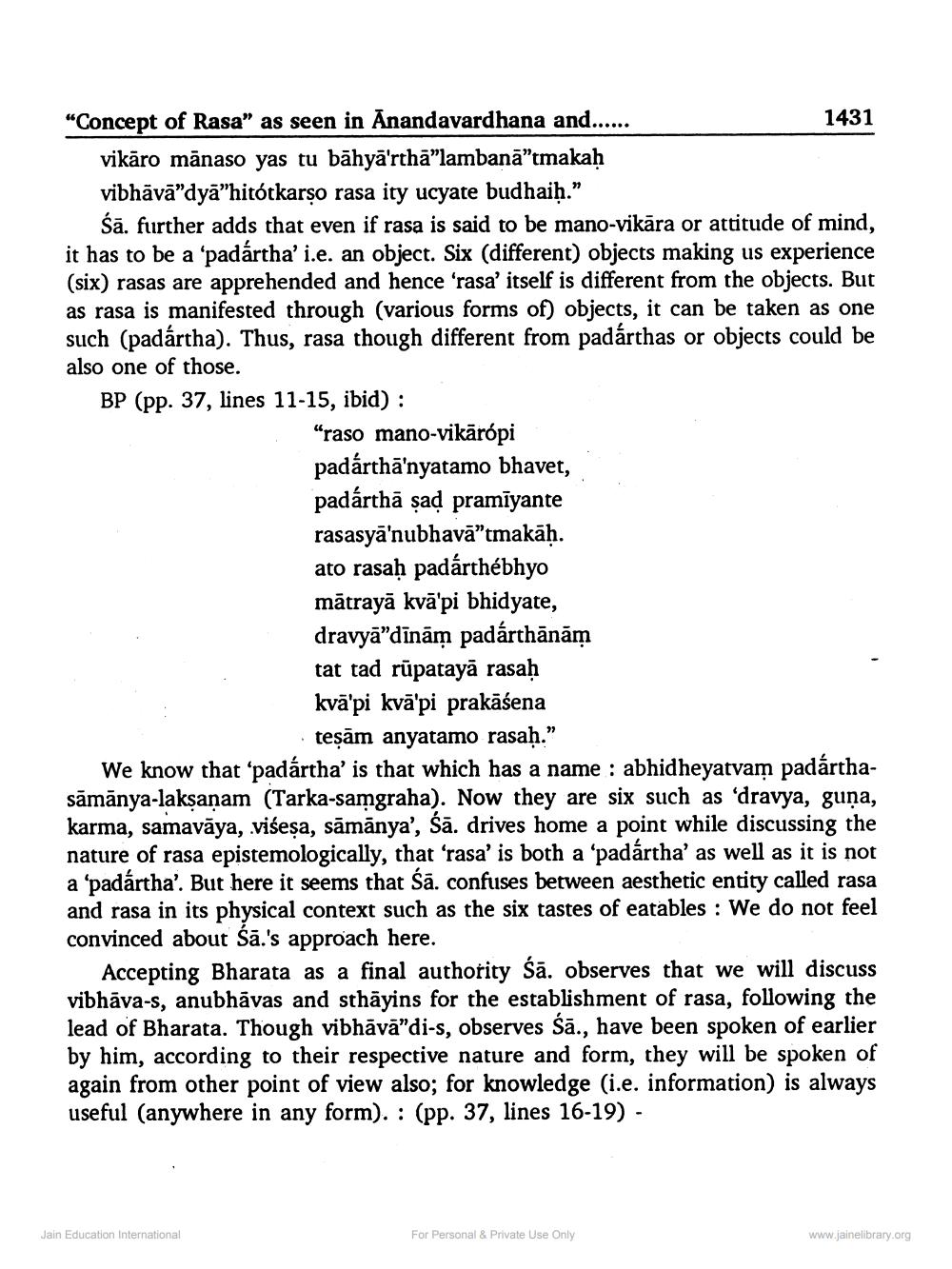________________
"Concept of Rasa” as seen in Anandavardhana and..
1431 vikāro mänaso yas tu bāhyā'rthä”lambanā"tmakaḥ vibhāvā”dyā”hitótkarso rasa ity ucyate budhaiḥ.”
Śā. further adds that even if rasa is said to be mano-vikāra or attitude of mind, it has to be a 'padártha' i.e. an object. Six (different) objects making us experience (six) rasas are apprehended and hence 'rasa' itself is different from the objects. But as rasa is manifested through (various forms of) objects, it can be taken as one such (padártha). Thus, rasa though different from padárthas or objects could be also one of those. BP (pp. 37, lines 11-15, ibid) :
“raso mano-vikārópi padárthā'nyatamo bhavet, padárthā sad pramīyante rasasyā'nubhavā”tmakāḥ. ato rasaḥ padárthébhyo mātrayā kvā'pi bhidyate, dravyā’dīnām padárthānām tat tad rūpatayā rasaḥ kvā'pi kvā'pi prakāśena
teşām anyatamo rasaḥ.” We know that ‘padártha' is that which has a name : abhidheyatvam padárthasāmānya-laksanam (Tarka-samgraha). Now they are six such as 'dravya, guna, karma, samavāya, .višesa, sāmānya', Sā. drives home a point while discussing the nature of rasa epistemologically, that 'rasa' is both a 'padártha' as well as it is not a 'padártha'. But here it seems that Śā. confuses between aesthetic entity called rasa and rasa in its physical context such as the six tastes of eatables : We do not feel convinced about Sā.'s approach here.
Accepting Bharata as a final authority śā. observes that we will discuss vibhāva-s, anubhāvas and sthāyins for the establishment of rasa, following the lead of Bharata. Though vibhāvā"di-s, observes śā., have been spoken of earlier by him, according to their respective nature and form, they will be spoken of again from other point of view also; for knowledge (i.e. information) is always useful (anywhere in any form). : (pp. 37, lines 16-19) -
Jain Education International
For Personal & Private Use Only
www.jainelibrary.org




